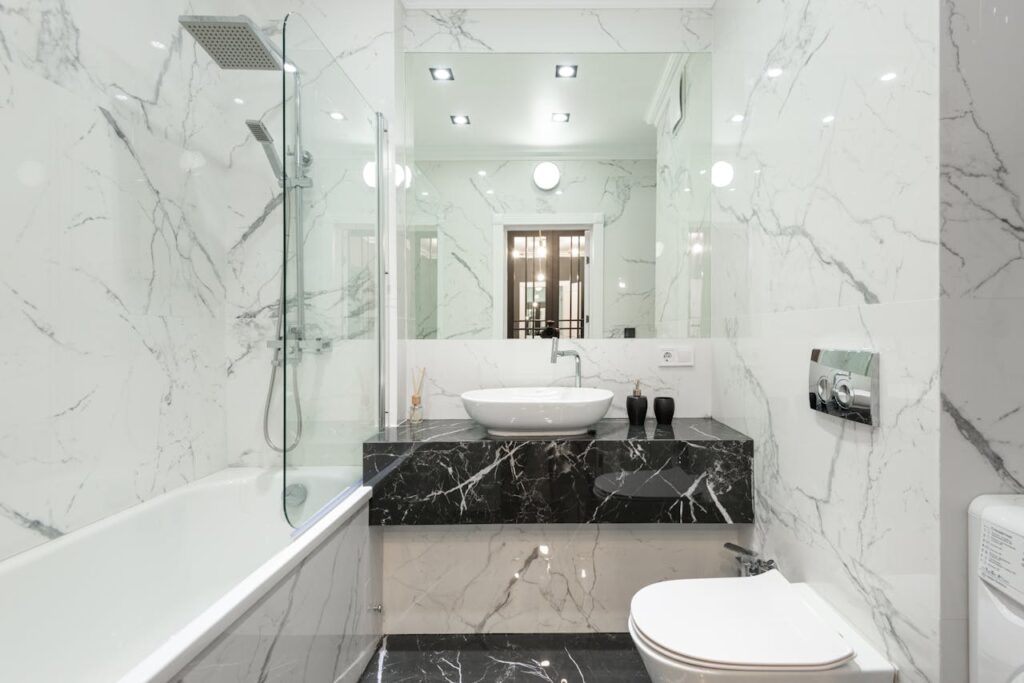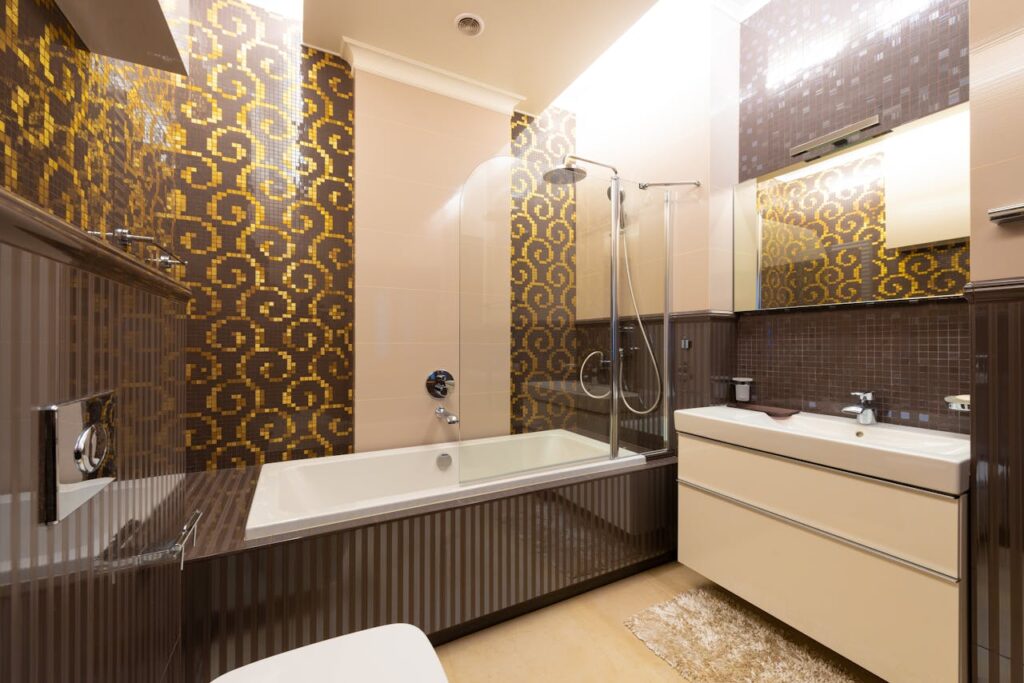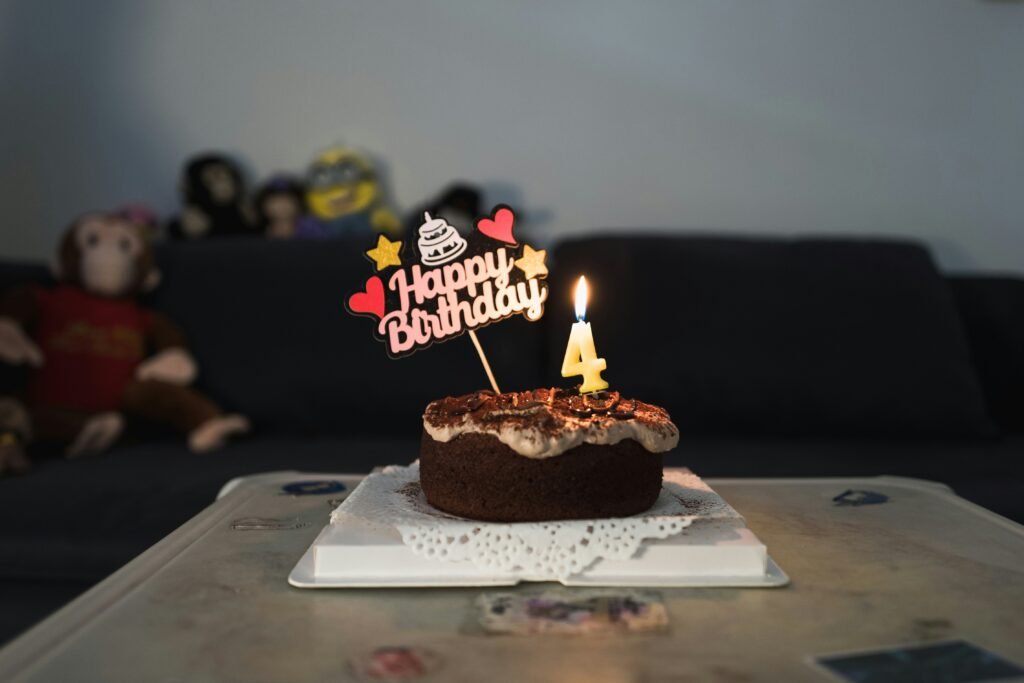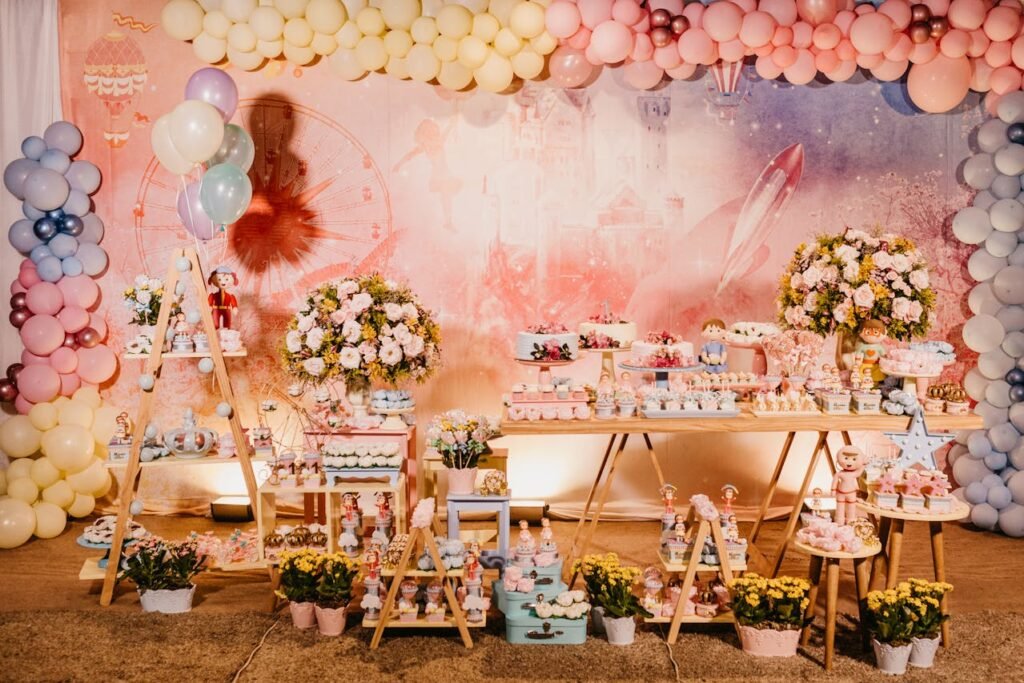Let me share something that completely changed my perspective as an interior designer.
According to a recent National Association of Realtors study, bathrooms are the most common small spaces in American homes, with 85% of homeowners wanting to make these spaces feel larger.
You know that feeling when you walk into a bathroom and it just feels claustrophobic? Well, I’ve spent the last decade helping homeowners tackle this exact challenge, and I’ve learned that the right colors can literally make your walls appear to expand before your eyes.
I remember standing in my own tiny bathroom decoration fifteen years ago, feeling frustrated by how cramped it felt, when I discovered the transformative power of color!
lets see how you can make your bathroom with bathroom colors and many more.
My personal story about Bathroom colors
Here’s what shocked me during my first major bathroom renovation project: changing just the wall color made my client’s 60-square-foot bathroom feel almost twice as spacious.
No knocking down walls, no expensive remodeling – just strategic color selection. And the best part? This approach works whether you’re dealing with a powder room the size of a closet or a small master bath that needs to work harder for your family.
In this comprehensive guide, I’m going to walk you through exactly how to use color to visually expand your bathroom space. We’ll explore everything from the psychology behind space-enhancing colors to practical application techniques I’ve refined over hundreds of projects.
Whether you’re planning a complete renovation or just want to refresh your space with paint, you’ll discover proven strategies that can transform your small bathroom into an airy, welcoming retreat.
Understanding Color Psychology in Small Bathrooms

Let me tell you about a mistake I made early in my design career that taught me everything about color psychology in bathrooms.
I once painted a small bathroom deep navy blue because it was trendy – big mistake! My client called me in a panic the next day, saying they felt like the walls were closing in. That’s when I dove deep into studying how our brains process color and space.
Fundamentals of color psychology
Here’s what I discovered: our brains automatically associate light colors with openness (think about the sky) and dark colors with enclosed spaces (like caves). It’s literally wired into our survival instincts!
In my 15 years of bathroom designs, I’ve seen this play out countless times. Light colors reflect more light, making walls appear to recede, while darker colors absorb light and make walls feel closer.
But here’s something really interesting I’ve learned through countless bathroom renovations: it’s not just about choosing light colors. The way light interacts with color changes dramatically based on your bathroom’s lighting.
In fact, I once selected the perfect pale gray for a client’s windowless bathroom, only to find it looked completely different under their cool LED lights versus their warm vanity lights!
Homeowners mistakes
The biggest mistake I keep seeing homeowners make?
Testing colors without considering their bathroom’s specific lighting conditions.
I always tell my clients to test paint samples at different times of day and under every lighting condition their bathroom experiences. Trust me, a color that looks perfect at noon might feel cave-like at 7 PM under artificial lighting.
Best Light Colors for Maximizing Space

Oh boy, do I have some game-changing insights about light colors for you! After testing literally hundreds of shades in small bathrooms, I’ve found some clear winners that consistently make spaces feel larger. Let me share my top picks that have never failed me.
White tone and element
First up, let’s talk about whites – but not just any whites! I learned this lesson the hard way after using a stark white that made my client’s bathroom feel like a sterile doctor’s office. You want whites with subtle undertones. My go-to is Benjamin Moore’s “White Dove” – it has just enough warmth to feel welcoming while still maximizing light reflection. I’ve used it in over 50 bathrooms, and it’s increased perceived space every single time!
For those worried about a space feeling too clinical, soft creams are your best friend. I recently used Sherwin-Williams “Alabaster” in a tiny 5×7 bathroom, and my client swears it doubled the visual space. The key is choosing creams with a light reflectance value (LRV) above 82 – trust me, this number matters!
Gray and light blue
When it comes to pale grays, here’s a pro tip I discovered through trial and error: look for grays with blue undertones rather than beige ones. They create an airier feel because they mimic the color of the open sky.
My current favorite is “Gray Owl” by Benjamin Moore – it’s transformed countless small bathrooms in my projects.
On The other hand Light blues and gentle greens have been absolute game-changers in my recent projects. But here’s the catch – you need to choose ones with a high gray content to keep them sophisticated. I recently used “Sea Salt” by Sherwin-Williams in a tiny powder room, and three different guests asked if we’d actually expanded the space!
Strategic Color Placement Techniques
Let me share a secret that revolutionized my approach to bathroom design: it’s not just about which colors you choose, but where you put them! I learned this the hard way after painting an entire small bathroom one color and wondering why it felt flat and boxy. That’s when I discovered the power of strategic color placement.
Universal ratio for Bathroom colors
The 60-30-10 rule has become my holy grail for small bathroom color distribution. Here’s how I break it down: 60% of your space should be your dominant color (usually the walls), 30% for secondary colors (like tiles or vanity), and 10% for accent colors. I recently used this formula in a tiny 6×8 bathroom – light gray for walls, white for fixtures, and navy blue accents – and my client couldn’t believe how much larger it felt!
Small detail big impact
Here’s a clever trick I stumbled upon during a challenging renovation: using vertical color stripes doesn’t just make your walls look taller, it actually tricks your brain into perceiving more space! Not literal stripes (please don’t!), but subtle variations in tone between your wall color and tile height. In my last project, I used a slightly darker shade below the chair rail and a lighter one above – instant height illusion!
Want to know my favorite hack for making narrow bathrooms feel wider? I’ve started using horizontal color blocking with slight variations of the same shade. For instance, in a recent project, I used three different tones of greige in horizontal sections – the walls appeared to stretch outward like magic!
Color Combinations That Create Depth

You know what’s fascinating about color combinations in small bathrooms? After years of experimentation, I’ve discovered that creating depth isn’t about bold contrasts – it’s about subtle layering! Let me share some combinations that have literally transformed tiny spaces into what feel like mini spas.
Two color tone
Two-tone walls have become my secret weapon, but there’s a trick to it.
I recently completed a bathroom where we used two shades of gray with just a 10% difference in value – the result was amazing! The walls seemed to recede, creating this gorgeous sense of depth without any obvious contrast. The key is choosing colors from the same paint strip, just 2-3 shades apart.
Relationship between wall and ceiling
Let’s talk about something that took me years to perfect: ceiling and wall relationships.
Here’s a pro tip that changed my design game: painting the ceiling one shade lighter than the walls creates an illusion of height. I did this in a bathroom with 7-foot ceilings, and visitors swore they were at least 8 feet high!
Floor color
Floor color coordination is crucial, and I learned this through an embarrassing mistake early in my career. I once paired light walls with dark floors in a small bathroom, and it looked like the floor was rising up to meet you – not the effect we wanted!
Now I always ensure the floor color is no more than 20% darker than the walls. This creates a seamless flow that expands the space visually.
Professional Tips and Techniques
After painting hundreds of bathrooms, I’ve learned that the difference between an amateur and professional-looking finish often comes down to tiny details that most people overlook.
Let me share some game-changing tips that will help you achieve results that look like they cost thousands more than they actually did.
paint finishing
First, let’s talk about paint finishes – this is crucial in bathrooms!
I learned this the hard way when I used flat paint in my first bathroom project. Three months later, it was a disaster from moisture damage. Now I always use either satin or semi-gloss finishes in bathrooms.
They’re not only more durable but also reflect light better, making your space feel larger. Pro tip: use semi-gloss on any surface within splash distance of water sources!
Best painting order
Here’s a secret about the paint application that revolutionized my approach: always paint your bathroom in a specific order.
Start with the ceiling, then move to walls, and finish with trim.
This sequence prevents drips and ensures the cleanest lines. I recently completed a bathroom where we followed this order, and the client couldn’t believe we didn’t use painter’s tape on the edges – that’s how clean the lines were!
Common Color Mistakes to Avoid
Oh boy, do I have some stories about color mistakes!
After seeing (and honestly, making) pretty much every possible color error in bathroom design, I’ve developed a sort of “what not to do” guide that’s saved countless projects from disaster.
Darkish vibe
The biggest mistake I see repeatedly?
Going too dark in an attempt to be dramatic. I remember one client who insisted on charcoal gray walls in their tiny powder room, despite my gentle warnings.
Two weeks later, they called me in a panic – the room felt like a cave! Here’s what I’ve learned: if you want drama in a small bathroom, introduce it through accessories and artwork, not wall color.
Pattern makeover
Pattern overwhelm is another common pitfall that can make your bathroom feel cluttered and smaller. I once had a client who fell in love with a bold wallpaper pattern. We compromised by using it on just one wall, treating it like artwork. This approach actually ended up making the space feel larger because it created a focal point that drew the eye through the room.
Lastly
As I sit here in my home office, looking at before-and-after photos from dozens of bathroom transformations, I can’t help but smile thinking about how a simple color change can create such dramatic results.
After guiding you through these color strategies that I’ve refined over 15 years of interior design work, I hope you’re feeling inspired and empowered to tackle your own bathroom transformation!
Remember when I mentioned that client who thought their 60-square-foot bathroom was a hopeless case? Well, they sent me a message just last week saying they still love their space three years later.
That’s the power of choosing the right colors – it’s not just about making your bathroom look bigger, it’s about creating a space that brings you joy every single day.
Happy decorating!


